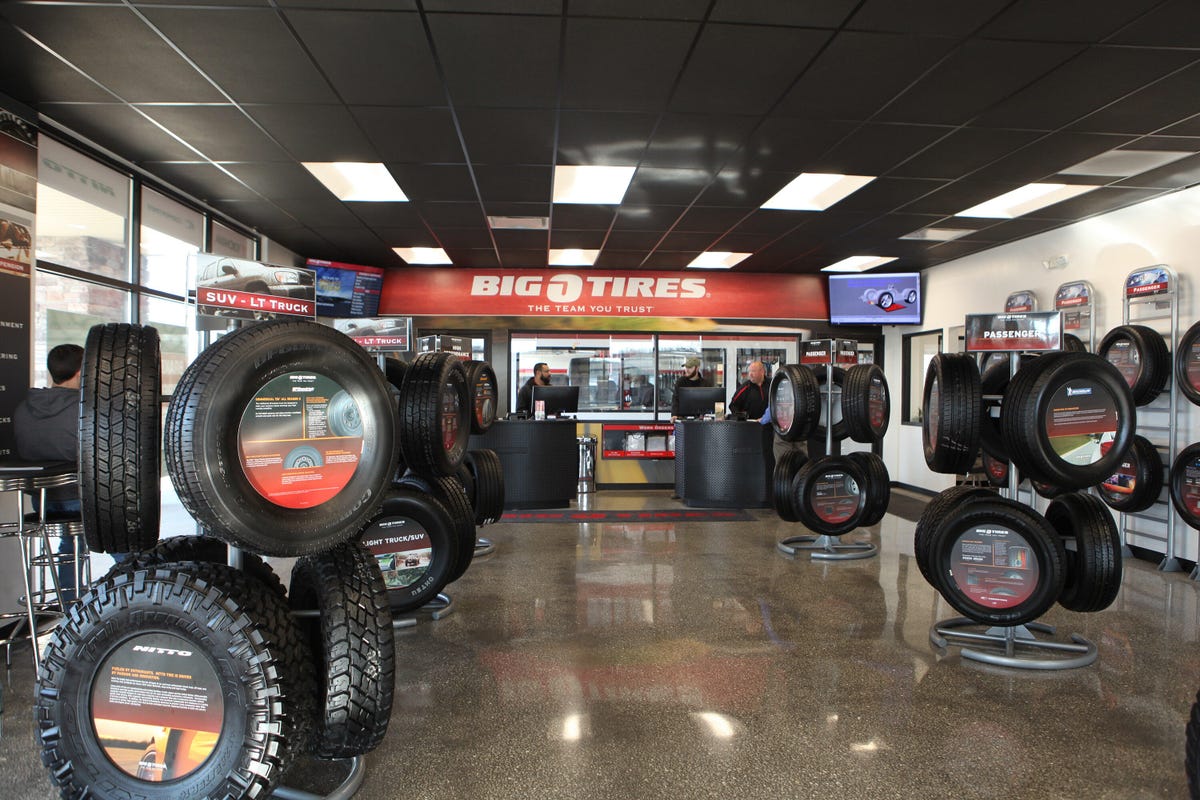Tire Solution: Understanding Tire Stress Tracking Solutions
Recognizing Tire Stress Surveillance Systems (TPMS) is a vital aspect of keeping optimum car efficiency and security on the road. With improvements in automobile technology, TPMS has actually become a typical feature in modern-day automobiles, giving real-time information on tire stress degrees. Diving deeper right into the complexities of TPMS, one can uncover the different parts that comprise this system and the relevance of each in making sure exact surveillance. From direct to indirect TPMS systems, the landscape of tire stress monitoring is diverse, each with its distinct set of advantages and considerations. Remain tuned to untangle the complexities of TPMS, from maintenance suggestions to the undeniable advantages of keeping your tires effectively pumped up. tires morris il.

Relevance of TPMS
The importance of Tire Pressure Surveillance Systems (TPMS) depends on their capacity to enhance automobile safety and efficiency via real-time surveillance of tire pressure levels. Keeping the proper tire pressure is important for making certain optimum handling, braking, and total safety of an automobile. TPMS gives drivers with instant feedback on any underinflated or overinflated tires, enabling timely modifications to be made.
Elements of TPMS
Sensors are usually located in the tire shutoff stem or attached to the wheel assembly, where they measure tire stress and transfer data to the control module. Some progressed TPMS models also show the actual tire pressure analyses for each tire, offering motorists with real-time information to ensure optimal tire performance and safety. By keeping track of tire stress constantly, TPMS aids stop crashes, minimizes tire wear, and enhances fuel efficiency, making it an important element for vehicle security and performance. tires morris il.
Types of TPMS

On the other hand, indirect TPMS depends on the lorry's wheel speed sensors to monitor tire pressure. This system finds underinflation by comparing the rotational rates of the wheels. Indirect TPMS is much less costly than direct TPMS, as it utilizes existing sensing units within the lorry.
While direct TPMS supplies extra precise analyses, indirect TPMS is easier in design and normally calls for less maintenance. Both systems have their limitations and benefits, and the option between them frequently depends on variables such as cost, lorry make, and individual preference. Understanding the distinctions in between these 2 sorts of TPMS can aid vehicle owners make educated choices relating to tire upkeep and safety and security.
TPMS Upkeep Tips
Conduct regular checks on the tire view website pressure levels and compare them with the TPMS readings to ensure they are constant. Throughout tire rotation or replacement, make certain that the TPMS parts are taken care of thoroughly to avoid any possible damages. If the TPMS advising light brightens on the control panel, resolve the concern immediately by examining the tire pressures and the overall system for any mistakes.
Benefits of Correct Tire Stress
Maintaining proper tire stress, as stressed in TPMS Maintenance Tips, is essential for gaining the many advantages associated with optimum tire stress levels. Among the key benefits of preserving the right tire stress is enhanced fuel performance. When More hints tires are effectively inflated, there is much less moving resistance, resulting in far better gas economic situation. In addition, appropriate tire stress makes sure even tire wear, extending the life-span of the tires and promoting more secure driving problems. With the right tire stress, lorries also have better handling and grip, particularly in adverse climate conditions. This can boost general driving efficiency and safety for the motorist and guests. Additionally, keeping optimum tire stress can add to a smoother and a lot more comfortable ride by reducing vibrations and sound triggered by underinflated tires. In final thought, the advantages of proper tire pressure surpass simply tire long life; they encompass boosted fuel performance, improved security, far better lorry efficiency, and overall driving convenience.
Conclusion
In conclusion, comprehending tire pressure tracking systems (TPMS) is important for preserving ideal tire stress and making certain automobile safety. By recognizing the value of TPMS, being familiar with its components, recognizing the various kinds offered, sticking to proper maintenance pointers, and recognizing the advantages of preserving correct tire pressure, chauffeurs can improve their driving experience and prolong the lifespan of their tires. anchor Correct tire pressure is crucial to risk-free and efficient lorry procedure.
